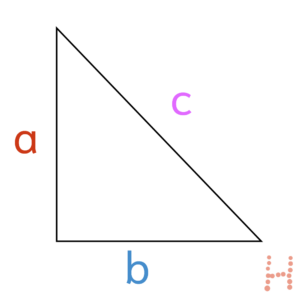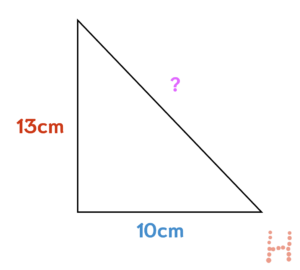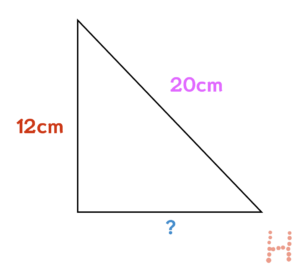Pythagoras Theorem (a2 + b2 = c2) is a formula that can be used to work out the length of one side of a triangle.
Working out one side of a triangle
You may be wondering what a, b and c in the formula mean. The a, b and c in the formula represent the three sides of a triangle.

This will help us out when we work out the length of one side of a triangle.
Let’s try an example question. (Just a heads-up, you will need a calculator for this.)
Work out the ? side of the triangle.

The first thing we need to know is what a (dark red) and b (blue) are. In this case, a is 13cm and b is 10cm. So we need to work out c (light purple) is.
Firstly, we need to find out what 13 and 10 squared (that’s what the 2 stands for) are.
So 13 squared is 13 multiplied by itself, which gives us 169.
10 squared is 10 multiplied by itself, which gives us 100.
So now we need to add 169 and 100 together, which gives us 269.
We now need to square-root 269. Use the √ button on your calculator.
Square-root 269 is 16.4… So c is 16.4cm.
Let’s try another example question, but this time we’ll need to work out the b side, which is slightly different to what we just did.

In this example, c (light purple) is 20cm and a (dark red) is 12cm.
Firstly, we need to find out what 202 and 122 are.
202 = 400
122 = 144
Now, instead of adding the two squared numbers together, we need to subtract them.
So 400 – 144 = 256.
Now we need to square-root 256.
Square-root 256 is 16.
Printable worksheets are coming soon.